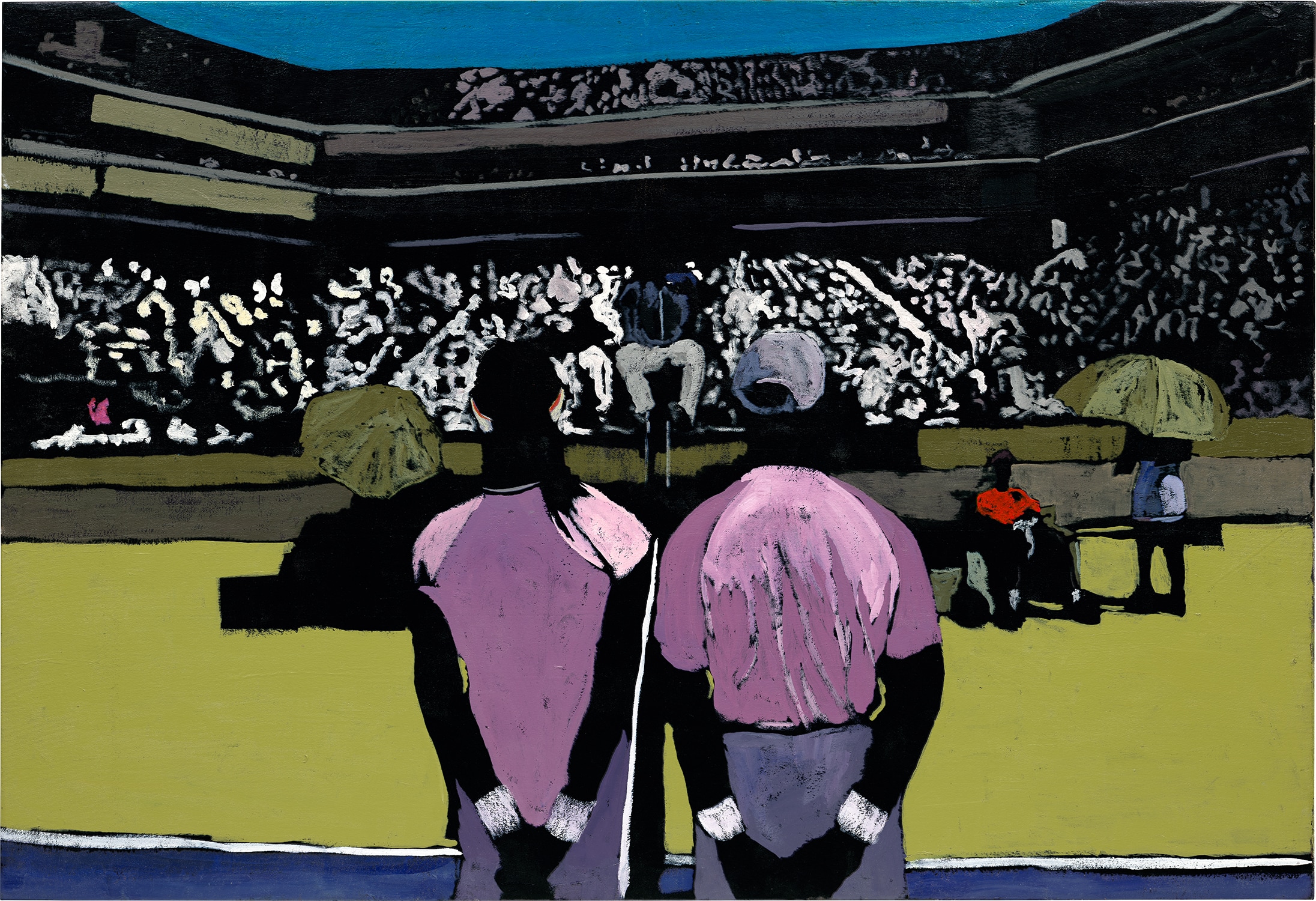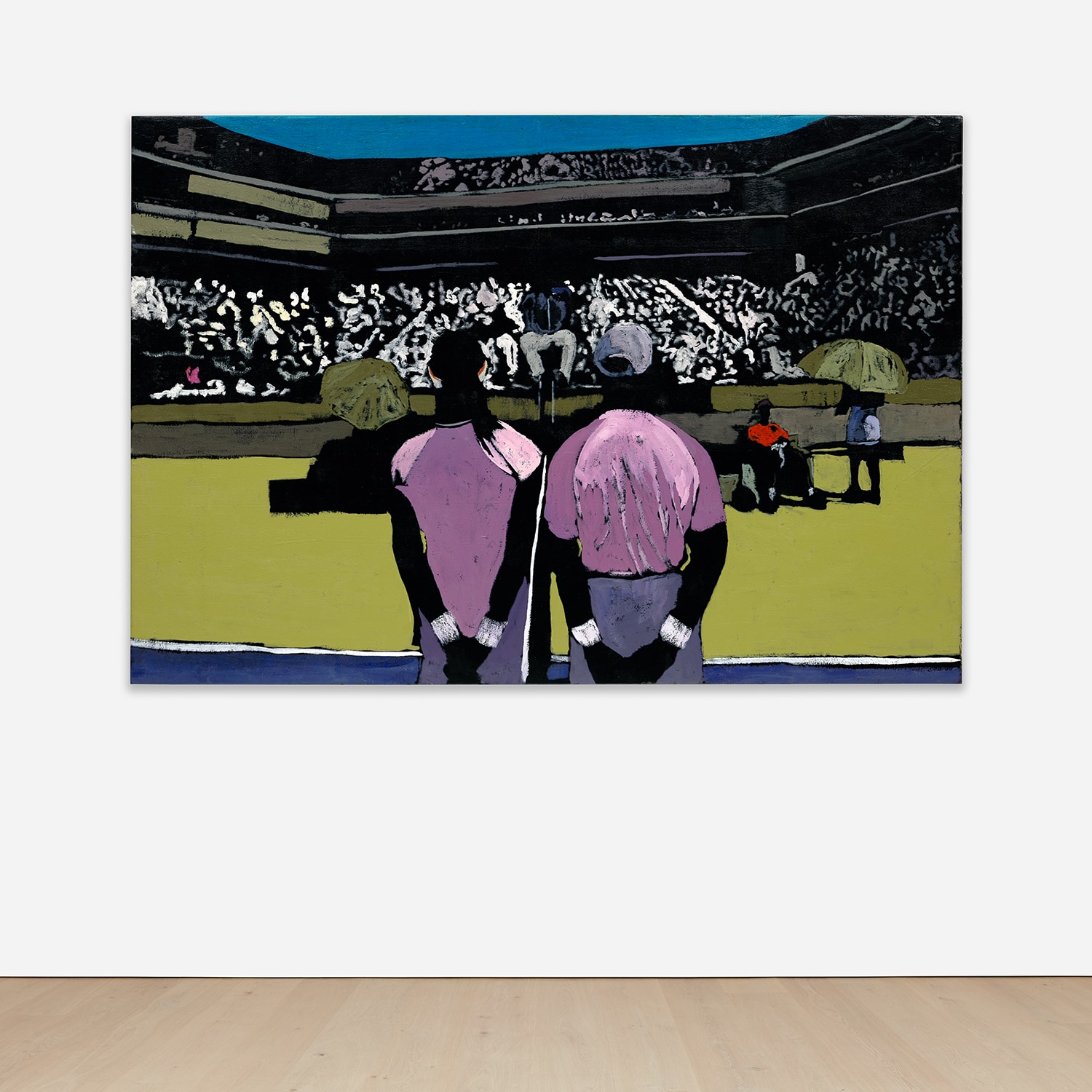



Property from a Distinguished Private American Collection
12
Reggie Burrows Hodges
First Serve
signed with the artist’s initials and dated ‘RBH 2019’ on the reverse
acrylic and pastel on canvas
141.3 x 206.4 cm (55 5/8 x 81 1/4 in.)
Executed in 2019.